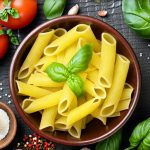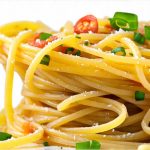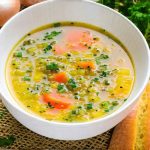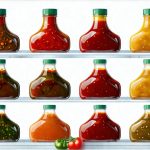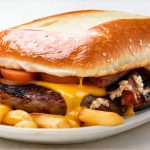Overindulging in particularly rich or creamy dishes – think decadent pasta carbonara, cheesy lasagna, or even a generous helping of ice cream – can often lead to that unpleasant feeling of nausea. It’s a common experience, and thankfully, not usually a sign of anything serious. The discomfort arises from several factors: the sheer volume of food stretching your stomach, the high fat content slowing down digestion, and sometimes, the intensity of flavors overwhelming your system. Understanding why overeating causes nausea is the first step towards managing it effectively, allowing you to enjoy your favorite foods in moderation without significant after-effects. This isn’t about deprivation; it’s about making informed choices and employing simple strategies to minimize discomfort and restore a sense of wellbeing.
The body reacts to excessive richness by essentially hitting the brakes on digestion. When confronted with a large quantity of fatty food, the digestive system works harder and slower to process it all. This can lead to bloating, feelings of fullness that linger uncomfortably long, and ultimately, nausea. The vagus nerve, which plays a critical role in gut-brain communication, becomes overstimulated, potentially triggering those unpleasant waves of sickness. It’s important to remember that everyone’s sensitivity differs; what causes nausea for one person might be perfectly manageable for another. However, by understanding these underlying mechanisms, we can proactively address the issue and find strategies that work best for our individual systems. You may also want to check out step-by-step strategies for reducing stress related nausea.
Understanding The Digestive Process & Rich Foods
The digestive system is a remarkably complex machine, designed to break down food into usable energy. It relies on a series of coordinated processes: mechanical digestion (chewing and churning), chemical digestion (enzymes breaking down nutrients), and absorption (transferring nutrients into the bloodstream). Rich, creamy foods, while delicious, present a particular challenge. Their high fat content requires bile from the gallbladder to emulsify fats for proper breakdown, placing an extra burden on the liver and gallbladder. Moreover, these foods often digest slowly, staying in the stomach longer and increasing the likelihood of bloating and acid reflux – both contributors to nausea.
The slower digestion isn’t inherently bad; it provides sustained energy. However, when coupled with a large quantity of food, it disrupts the normal digestive flow. The stomach expands significantly, putting pressure on surrounding organs and potentially triggering the vagus nerve. This is why portion control is so important. Even a delicious meal can become problematic if consumed in excessive amounts. Paying attention to your body’s signals – recognizing when you’re comfortably full versus overly stuffed – is crucial for preventing post-meal nausea. If indigestion is a frequent issue, consider recognizing and managing it caused by certain foods.
Finally, consider the role of food combinations. Pairing very rich foods with other difficult-to-digest items (like a heavy cream sauce over fried chicken) can further exacerbate the problem. The digestive system becomes overwhelmed trying to process multiple challenging components simultaneously, increasing the likelihood of discomfort. Simple dietary adjustments – like balancing rich foods with lighter options or focusing on smaller portions – can make a significant difference.
Immediate Relief Strategies
When nausea strikes after indulging in a rich meal, swift action can often alleviate symptoms. The goal is to soothe the digestive system and prevent further irritation. One effective first step is simply resting. Avoid strenuous activity immediately after eating; allow your body to focus its energy on digestion. Lying down might not always be helpful if you’re prone to acid reflux (as it can worsen heartburn), but gently reclining in a comfortable position is often beneficial.
Hydration is also key. Sip small amounts of clear liquids – water, herbal tea (ginger or peppermint are excellent choices), or diluted juice – to prevent dehydration and aid digestion. Avoid sugary drinks, carbonated beverages, and caffeine, as these can further irritate the stomach. A gentle walk, if you feel up to it, can sometimes help stimulate digestive movement without being overly strenuous. However, listen to your body; if walking exacerbates nausea, stop immediately.
Finally, consider over-the-counter remedies like antacids (if heartburn is a contributing factor) or anti-nausea medication (following package instructions carefully). These should be used as temporary solutions and aren’t a substitute for addressing the underlying issue of overeating. Long-term reliance on medication isn’t advisable; focusing on preventative measures is far more effective. If eating too fast contributes to your nausea, explore effective ways to manage it.
Ginger & Peppermint: Natural Remedies
Ginger and peppermint have long been recognized for their anti-nausea properties. Ginger contains compounds called gingerols, which help to speed up gastric emptying – the process of moving food from the stomach to the small intestine. This can reduce bloating and feelings of fullness that contribute to nausea. You can consume ginger in various forms:
- Ginger tea: Steep a few slices of fresh ginger in hot water for 5-10 minutes.
- Ginger chews or candies: These are readily available at most grocery stores.
- Fresh ginger grated into food: Add a small amount to your meal, if tolerated.
Peppermint, on the other hand, has calming effects on the stomach muscles. It helps to relax the digestive tract and reduce spasms that can contribute to nausea.
- Peppermint tea: A classic remedy for soothing an upset stomach.
- Peppermint essential oil (diluted): Inhaling a few drops of diluted peppermint oil can provide relief from nausea, but never ingest essential oils.
- Peppermint candies: Sucking on a peppermint candy can sometimes help to settle the stomach.
Portion Control & Mindful Eating
The most effective way to prevent nausea caused by rich foods is to address the root cause – overeating. Practicing portion control and mindful eating are crucial strategies for managing your intake and avoiding discomfort. This doesn’t mean denying yourself treats; it means enjoying them in moderation.
- Pre-portioning: Before you even start eating, divide your meal into appropriate serving sizes.
- Using smaller plates: Visually, a smaller plate can make a portion appear larger, leading to feelings of satisfaction with less food.
- Eating slowly: Savor each bite and pay attention to the flavors and textures. This allows your brain time to register fullness signals.
- Eliminating distractions: Turn off the TV, put away your phone, and focus on your meal. Distractions can lead to mindless eating.
Mindful eating encourages you to tune into your body’s hunger and fullness cues. Ask yourself: Am I truly hungry? Is this food satisfying me? When do I feel comfortably full? Learning to recognize these signals will help you avoid overeating and reduce the risk of nausea. It’s about quality, not quantity. You may find managing morning nausea without skipping breakfast helpful as well.
Dietary Adjustments & Future Prevention
Beyond immediate relief strategies and mindful eating practices, consider making some broader dietary adjustments to minimize post-meal discomfort. Incorporating fiber-rich foods into your diet can aid digestion and prevent constipation, which can exacerbate nausea. Fruits, vegetables, whole grains, and legumes are all excellent sources of fiber.
- Balance rich meals: When you know you’re going to indulge in a creamy or fatty dish, balance it with lighter options – a side salad, steamed vegetables, or lean protein.
- Limit fat intake: While healthy fats are essential for overall health, excessive fat can overwhelm the digestive system. Be mindful of your total fat consumption throughout the day.
- Avoid food combinations: Pairing very rich foods with other difficult-to-digest items can worsen symptoms.
- Stay hydrated: Drinking plenty of water throughout the day supports healthy digestion and prevents dehydration, which can contribute to nausea.
Finally, pay attention to your body’s individual sensitivities. If you consistently experience nausea after eating certain foods, consider reducing or eliminating them from your diet. The key is to find a balance between enjoying your favorite foods and maintaining a comfortable digestive system. It’s about understanding your own limits and making informed choices that support your wellbeing. Consider if combinations of healthy foods might be causing issues for you as well.



